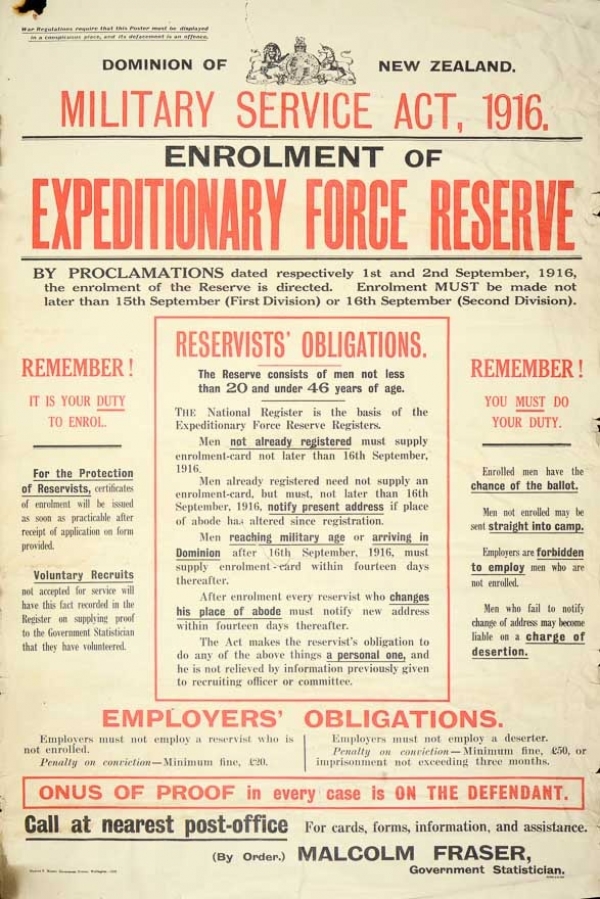Sunday, 31 August 2014 00:00
The Treatment of Conscientious Objectors in New Zealand - Wanganui Detention Barracks
Written by Soldiersandorder NZ-FR
How were objectors treated in New Zealand?
Treatment of the Objectors – Wanganui Detention Centre
The policy implemented in which the objectors were treated by was extremely harsh with victims suffering brutal acts affecting them all physically, mentally and emotionally.
The grounds of the Wanganui Detention Barracks were often nicknamed the ‘slaughter yard’ with evidence of blood splatters displayed throughout the yard. Those who refused to co-operate were pushed, pulled, kicked and punched. A number even were dragged with a rope around their neck and pushed into walls until their faces were bloodied and grazed. As a form of discipline, objectors such as Thomas Moynihan were subjected to cruelty such as being forcibly dressed in uniform with a rifle tied to his wrists and made to march the lengths of the grounds. Men were neglected of their food and lifestyle necessities if they got on the wrong side of the perpetrators The victims not only physical abuse and violence but verbal also Wanganui Detention Barracks These barracks were set up as one place of punishment for conscientious objectors within New Zealand A man named lieutenant James Crampton was placed in charge of this and was known for his very brutal stance on the treatment of those who refused to fight Those who objected to wearing the uniform were forcibly made to put it on and they often had rifles tied to their wrists to match the appearance of a ‘true soldier’ Crampton believed that these men were the worst kind of people and said “the sight of raw blood does my eyes good” referring to those who were injured by having their necks tied with ropes and dragged over the ground One notable objector who faced this treatment was a man named Thomas Monyihan who was beaten and attacked day after day when he refused to wear the uniform and march like a soldier, had his hair ripped out and ribs smashed to the ground before he eventually had to give in to obeying their instructions for the sake of his survival. Why did the government have this policy for conscientious objectors?In 1916 conscription for military service was introduced by the government to maintain New Zealand's supply of reinforcements. Only four MPs opposed its introduction. The New Zealand government wanted to enforce this policy in order to follow in Britain's footsteps and remain loyal to them. The overall opinion in society agreed with this also.
This is some of the information we had gathered whilst completing some in class research however we wish to continue further research with external resources so that we can broaden and develop our knowledge of the treatment of objectors in New Zealand and gain insight in to what the experiences would have been like for those that endured it at the time and the lasting effects it had.
By Lucy Edmond, Rosie Judd, Sadie-Jane Eversden, Sophie Edmond, Libby Flashman and Georgina Walker
Read 8983 times
Last modified on Thursday, 04 September 2014 05:42
Latest from Soldiersandorder NZ-FR
- Shared Histories exhibition posters in Wellington
- Prime Minister John Key with Baradene College Students and Shared Histories exhibition.
- Shared Histories exhibition Opening in Wellington. Baradene College students Olivia Mendonca and Genevieve Bowler with the Governor-General of New Zealand, Sir Jerry Mateparae.
- Our project makes it to Elizabeth II Pukeahu Education Centre [Wellington] launch - wow
- Project becomes an e-book at Auckland Libraries!
Related items
Media
More in this category:
« Anti-Conscription During WW1
Background to Anti-Militarism in New Zealand »
Login to post comments
Search
Who's Online?
The following members are online:
Latest Forum Posts
- No posts to display.
Powered by Technologywise / Design by yojodesign

